Reptile & Amphibian
News Blog
Keep up with news and features of interest to the reptile and amphibian community on the kingsnake.com blog. We cover breaking stories from the mainstream and scientific media, user-submitted photos and videos, and feature articles and photos by Jeff Barringer, Richard Bartlett, and other herpetologists and herpetoculturists.
Thursday, October 29 2015

In the end it was probably the sign.
There is a right way to run a reptile education program, and then there are other ways.
The first thing any reptile educator needs to do is check to make sure they are not violating either state and local laws, unless they want to get a rather unpleasant education of their own.
Erstwhile reptile educator Jeremy Phillips in Louisville, KY learned this lesson the hard way, when on Tuesday, Louisville Metro Animal Services came and took his four venomous snakes away. Animal Services says that while Kentucky law allows those snakes, a Metro Louisville ordinance does not and the local ordinance supersedes the state law. Phillips says someone snaked him out and reported it to authorities, but he now wants a change in the Metro Louisville ordinance. Phillips will face a judge for his arraignment next month and his case is the first of its kind in Louisville.
He had been putting on free snake shows, but recently was asking for five dollars to cover costs of snake food and electricity to keep them warm. No one has paid for the shows. Phillips said he just put up a sign advertising his $5 snake shows, which he thinks may have gotten him in trouble.
Read more and watch the video at WDRB.com
Wednesday, October 28 2015

How smart are reptiles? Can they be trained like other animals? You might be surprised at just how smart some of our reptilian friends are!
The San Diego Zoo recently released a video of one of their Anegada Iguanas( Cyclura pinguis) named Gus being trained using the target method. The Anegada Iguana is a endangered iguana species that was once distributed over the entire Puerto Rico Bank but its natural range is now restricted to the island of Anegada in the British Virgin Islands. Gus is part of the breeding program at the San Diego Zoo for this critically endangered species.
To watch the video, visit Reuters.
Monday, October 26 2015

Photo: Allmusic, Facebook/Kevin Fowler
Country Musician Kevin Fowler recently took to facebook to criticize people he feels are "rattlesnake sympathizers".
“All of you people who cry about folks killing rattlesnakes have probably never seen what it looks like when you get bit by one,” wrote Fowler. “All of you rattlesnake sympathizers will change your tune when your kid gets bit playing in your backyard.”
The article does point out the obvious, that rattlesnakes prefer to be left alone and are often hiding for their safety thankfully.
To read the full article, visit Wide Open Country.

Brazilian Lancehead - Gallery Photo by Neverscared A nanofiber hydrogel infused with snake venom may be the best material to stop bleeding quickly, according to scientists at Rice University in Texas.
The hydrogel incorporates batroxobin, a venom produced by two species of South American pit viper. It can be injected as a liquid and quickly turns into a gel that conforms to the site of a wound, keeping it closed, and promotes clotting within seconds. The hydrogel may be most useful for surgeries, particularly for patients who take anti-coagulant drugs to thin their blood.
“It’s interesting that you can take something so deadly and turn it into something that has the potential to save lives,” Jeffrey Hartgerink Rice University
Batroxobin, also known as reptilase, is a snake venom produced by the Fer De Lance Bothrops atrox and Brazilian Lancehead Bothrops moojeni, venomous species of pit viper found in South America. Batroxobin was recognized for its properties as a coagulant in 1936 and has been used in various therapies as a way to remove excess fibrin proteins from the blood to treat thrombosis and as a topical hemostat. It has also been used as a diagnostic tool to determine blood-clotting time in the presence of heparin, an anti-coagulant drug.
See more at: http://news.rice.edu/2015/10/26/snake-venom-helps-hydrogels-stop-the-bleeding/
Friday, October 23 2015

Photo: Chris Dresh
Ecologists have been working to protect rare reptiles from roadworks on a busy dual highway by luring them away from the A338 in Bournemouth, England. Instead of a forceful relocation, the ecologists in Bournemouth changed the landscape, directly impacting the road changes only, to allow the animals to relocate naturally.
Dorset County Council's environment councillor, Peter Finney, said: "We're incredibly proud of our natural environment in Dorset and we strive to find new ways to work alongside our many protected areas and species, and enhance it - even when we are doing something as destructive as rebuilding a road."
To read the full article, visit The BBC.
Thursday, October 22 2015

Photo: Freshwaters Illustrated/Dave Herasimtschuk/USDA.
In the race to save our dying amphibians, a fish endocrinologist developed "Cupids Syringe" also known as Amphiplex. The hormone based chemical helps to encourage better captive breeding.
Trudeau knew that the hormone systems controlling mating were nearly identical in fish and mammals, and he reasoned that they should be similar in amphibians, too. Taking a page out of the fish reproduction playbook, he combined a hormone that stimulates cells in the pituitary gland with a chemical that blocks the neurotransmitter dopamine, which can interfere with breeding. This combination had been used extensively in fish, to encourage breeding stock for the aquaculture industry. But it hadn’t yet been tried in amphibians. Before Amphiplex, only individual hormones, sans dopamine blockers, had been used on captive amphibians, with mixed success.
To read the full article, visit Mongabay.
Wednesday, October 21 2015
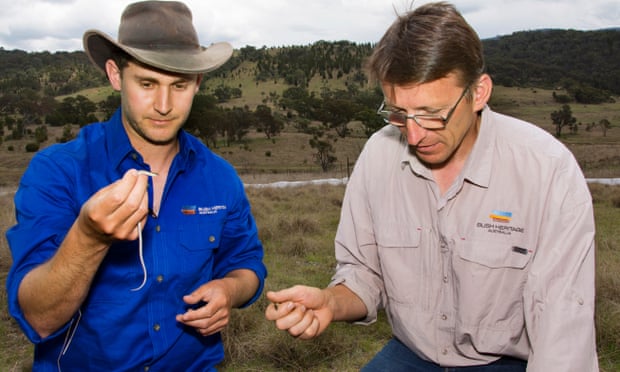
Photo: Annette Ruzicka/Bush Heritage Australia
The habitat of the Australian Legless Lizard population in Canberra is set to be razed in preparation to build an RV park for tourists to rest their weary heads. Conservationists from Bush Heritage Australia are working to save one of the last remaining groups of this species.
To capture these legless lizards – the name comes from legs that disappeared through evolution leaving just a scaly protrusion – Bush Heritage has purchased roof tiles in bulk.
About 800 have been strewn across the area for the proposed caravan park. The idea is simple but effective. Reptiles like to press themselves against heated surfaces to get warm. As the sun heats the tiles, legless lizards will wriggle underneath them.
To read the full article, visit The Guardian.
Monday, October 19 2015

Photo: Inside EditionA pair of conjoined twins were able to be successfully separated by their breeder.
"To my surprise, the reason the baby couldn't exit was because it was attached to its twin," he told INSIDE EDITION. "I helped them out of the egg and discovered they were joined at the yolk sac which is basically the equivalent to an umbilical. Immediately we knew we had a bit of a challenge on our hands."
To read the full article and see the video, visit Inside Edition.
Sunday, October 18 2015
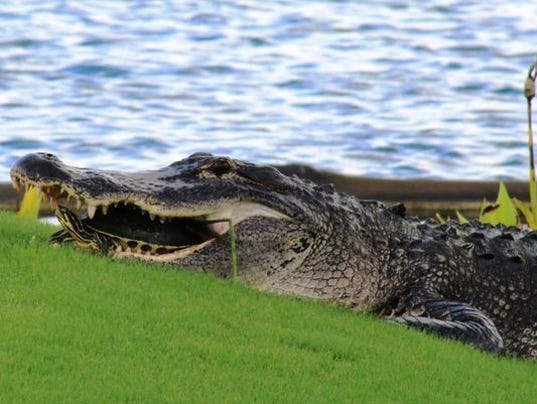
Photo: The News-Press
Despite being an apex predator, one unlucky Alligator learned there are things scarier than him, like a golf cart.
The gator's plan for a nice meal was all set in motion when the turtle found itself surrounded by the alligator's teeth. The turtle remained incarcerated by the alligator's gaping mouth until a golf cart scooted close enough to scare the gator back into the lake, Backman says.
To read the full article, visit USAToday.
Saturday, October 17 2015

Photo: StevenDavidJohnson.com and Wild Virginia
A Virginia pipeline may need to change it's route to avoid potential impact on two special of Salamanders, the Cheat Mountain salamander and the Cow Knob salamander.
It recommends changing the route of the pipeline to avoid as much of the salamanders' habitats as possible, possibly going south of South Sister Knob and Chestnut Ridge or north of Romney, West Virginia.
Another proposal would have the pipeline construction crews bore through Shenandoah Mountain, but that would not eliminate impacts on the habitats of the two species.
To read more visit Newsplex.com.
Friday, October 16 2015
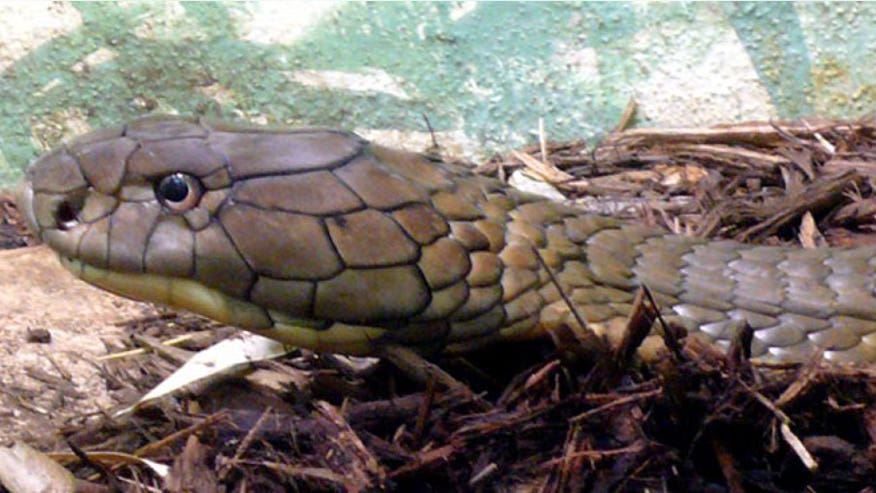
Photo: Fox News
Despite their best attempts to track global venomous snake bites, many Asian countries are unable to properly count the number of people envenomated annually. Due to the lack of available health care in some regions as well as the inability to pay for it leads many bites to not be counted.
Citing new evidence from a study in India and Bangladesh, the experts said around 46,000 people died annually of snake bites in India, plus another 6,000 in Bangladesh. The WHO estimates the annual death toll in India from snake bites is 10,000.
"Snake bite ... is almost completely ignored and grossly underestimated," said Alan Harvey, head of the International Society of Toxinology, who led the meeting.
"WHO and governments need to ... rank snake bite where it belongs -- as a very real public health and medical concern which needs funding, training and focus."
To read the full article, visit Fox News.
Thursday, October 15 2015

Photo: Don Lyman
Despite being listed as endangered on the IUCN Red List, the Blanding's Turtle is not federally protected in the US, although some states have regulations in place. Biologist Jared Green of Assabet River National in Hudson, Massachusetts, however wants to help increase their numbers in his state. The program hit a major milestone this spring releasing their One-thousandth turtle.
Biologists hope that building a strong population of Blanding’s turtles at Assabet River will help offset population losses being experienced by the turtles elsewhere.
Although there are some big Blanding’s turtle populations in the Midwest, most populations in the Northeast are less than 50 turtles, Butler says. The only large population is at Oxbow NWR, where an estimated several hundred Blanding’s turtles make their home. “That’s virtually unheard of east of the Mississippi,” explains Butler.
Read more at Earth Island Journal.
Wednesday, October 14 2015

Photo: A photo obtained from the Christian-Albrechts-Universitat of Kiel shows a South-American horned frog (genus Ceratophrys), waiting for its prey
Read more at: http://phys.org/news/2014-06-super-sticky-frog-scientists-tongue-tied.html#jCp
It was previously thought that a frog's tongue got it's stickiness from the saliva, but recent research suggests something completely different.
"The experimental data shows that frog tongues can be best compared to pressure-sensitive adhesives that are of common technical use as adhesive tapes or labels," according to the study published in the journal Scientific Reports.
Read more on this study at Phys.org.
Tuesday, October 13 2015

Photo: The News-Press
University of Queensland has decided turtles look good in clothes. They have altered the design of rash vest to fit both hatchling and adult sea turtles to learn a bit more about the dietary needs of Loggerheads by collecting a full fecal sample.
Mr Coffee said the information could be used to identify and protect habitats.
"The idea is that I'll be sampling nesting females as well," he said.
"So I'll be taking blood and skin from nesting females over the summer period at Mon Repos and Heron Island and be hoping to use ... analysis on those and figure out where they were foraging before they came to nest.
To get the full poop on this article, visit ABC.net.
Monday, October 12 2015

Photo: Robin Moore/ILCP
Called the "Golden Wonder" by conservationists, the Jackson’s Climbing Salamander, Bolitoglossa jacksoni, has not been seen since 1977. This field report chronicles the search for the Golden Wonder, as well as many other great and rare amphibian finds.
“When I spied that oh so familiar pose of a Long-limbed Salamander basking in the rain with feet splayed and spine bent with that beautiful long tail hanging down, I was thrilled. It really brought back much of what it had been like in ‘76; going out night after night in the rain. Finding this salamander is as rewarding as it was years ago.”
To read the full account, visit National Geographic.
Thursday, October 8 2015

A missing King Cobra that went on walkabout over a month ago has turned up underneath a clothes dryer at a neighbors house a half mile from it's cage. Found Wednesday night Orange County Animal Control officials and the wife of the snake’s owner confirm the snake is the one that escaped 35 days ago and it has been returned to its owners.
“Every time I put something in the dryer this hiss sound happened.” - Cynthia Mullvain
The cobra’s owner, Mike Kennedy, is facing charges for failure to immediately report the escape and has pleaded not guilty.
To read more check out the article at http://wfla.com/2015/10/08/missing-king-cobra-snake-found-in-orange-county-home/

Just days after capturing the once-missing king cobra from a local garage, Florida wildlife officials on Friday confirmed their intent to revoke the owner's license to own the venomous snake in a revocation letter, sent a day before the king cobra was captured. "Allowing you to continue to possess your venomous reptiles after three escapes would send a message that there will be no consequences for serious rule violations,"
The owner of the cobra has held permits to keep various exotic and potentially deadly animals for years, but records show numerous violations for not properly containing the animals including being cited in 2001 after another king cobra escaped from a house in the College Park area of Orlando, and in 2004 when an albino diamondback rattlesnake escaped and ended up in a neighbor's yard.
Read more at the Orlando Sentinel
Wednesday, October 7 2015
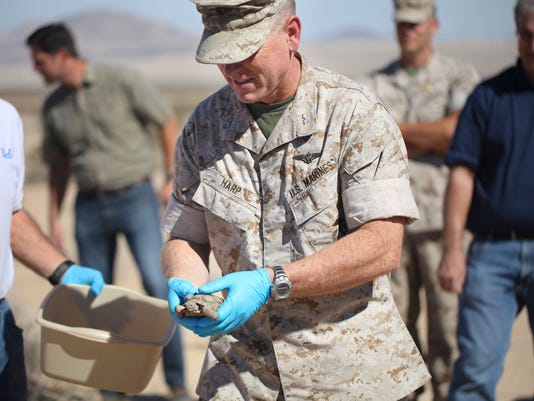
Photo: Lauren Kurkimilis/Marine Corps via AP
Near Twentynine Plams Marine Corps Base, 35 Desert Tortoises were recently released in an effort to repopulate the Mojave Desert at a ceremony with Marine Corps officials, U.S. Fish and Wildlife Service, California Department of Fish and Wildlife, and researchers from the University of California Los Angeles.
Biologists have been raising tortoises over the past nine years at a six-acre facility to help boost the population that was nearly decimated by a respiratory virus in the late 1980s.
Read more at Marine Corps Times.
Monday, October 5 2015

A python, reported to be 20 feet in length, critically injured a pet store owner in Newport Ohio in an apparent feeding mishap. According to media reports store owner Terry Wilkins was feeding the snake when it latched onto his arm and wrapped around his head, neck, and torso. Wilkens was not breathing when officers arrived to free him but he did resume breathing before he was taken to University of Cincinnati Medical Center.
"It was only by the grace of God that one of the officers knew how to deal with snakes," - police chief Tom Collins
The owner appears to be recovering after two officers pried off the 125-pound python that was wrapped around his head, neck and torso, according Collins.
The snake is currently alive and being held at the store where the incident occurred. Police are working with animal control to determine if the animal will need to be removed from the shop.
Click here to read more at WCPO Gallery photo by ahas

In what is likely to be the first of a number of reptilian additions the Black Pine Snake, Pituophis melanoleucus lodingi, has been added to the USFWS Threatened and Endangered Species List. Found in southwestern Alabama through southeastern Mississippi into eastern Louisiana, Black Pine Snakes are the only melanistic pine snake, ranging in coloration from an overall black and brown banded snake to a nearly jet-black animal. A threatened designation means a species is at risk of becoming endangered within the foreseeable future. The snake’s threatened status allows the USFWS to include exemptions allowing certain management activities to continue to occur with protection from the loss, injury or harassment.
“We crafted the exemptions to provide landowners flexibility to manage for their objectives while still affording conservation benefits to the black pinesnake,” - Cindy Dohner, USFWS Southeast Regional Director.
The Black Pine Snake’s decline is primarily attributed to the loss and degradation of the longleaf pine ecosystem because of habitat fragmentation, fire suppression, conversion of natural pine forests to densely stocked pine plantations, and agricultural and urban development. Other threats to the snake’s survival include road mortality and killing by humans.
The Black Pine Snake was added to the US Fish and Wildlife Services list of candidates for federal protection in 1999, and the Service published a proposed rule to list the black pinesnake as threatened on October 7, 2014. The black pinesnake final listing becomes effective on November 5, 2015 which is 30 days after its publication in the Federal Register on October 6, 2015. The decision is part of the Service’s effort to implement a court-approved settlement under an agreement aimed at significantly reducing it's current litigation-driven workload.
To read the USFWS Press Release click here. Gallery photo by user noMad627
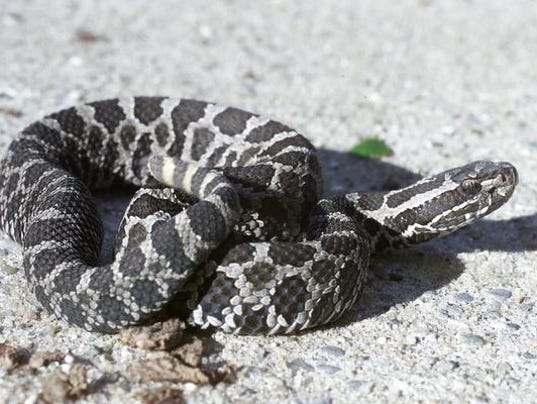
Photo: Eric Sharp, Detroit Free Press
Despite being up for consideration of listing on the Endangered Species Act since 1999, the Eastern Massasauga has remained unprotected. Now it appears that will change. Known for their docile nature, the massasauga rattlesnake has it's greatest known population density in the state of Michigan, but as with most endangered species, habitat destruction has started putting extreme pressure on the current populations.
The biggest threat to the snake, across its range from Missouri to New York, is loss and degradation of habitat, Kingsbury said.
"The snakes don't travel as far as other animals do from habitat patch to habitat patch," he said. "Anytime you have paved roads, a farmer's field, a residential area, they will be barriers to the snake, and it will turn around and head back from where it came."
Read more at USAToday.com.
Thursday, October 1 2015
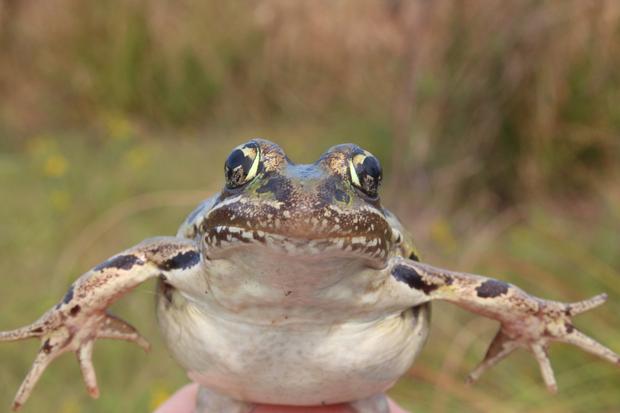
Photo Credit: Matthew Schlesinger, New York Natural Heritage Program
Carl Kauffeld believe there were two very different species of Leopard Frogs, but he did not have the means to prove it. Thankfully we now do! With the help of a geneticist, a team of researchers recently proved Kauffeld's belief to be true and named the Atlantic Coast Leopard Frogs after the herper great, Rana kauffeldi.
"There might have been some jumping up and down," recalled Dr. Matthew Schlesinger, the head of zoology at the New York Natural Heritage Program, who was part of the team. "There might have been some high fives going around."
...
Now, with virtually nothing known about this animal, the team trying to track and learn about its range and habits. "It's like we're trying to write the page of the field guide that's devoted to this species," Schlesinger said.
Learn more at WNYC.
|



